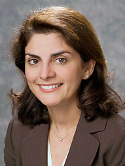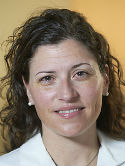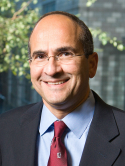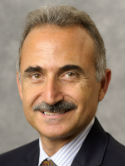Skin flap necrosis after mastectomy with reconstruction: A prospective study Journal Article
| Authors: | Matsen, C. B.; Mehrara, B.; Eaton, A.; Capko, D.; Berg, A.; Stempel, M.; Van Zee, K. J.; Pusic, A.; King, T. A.; Cody, H. S. 3rd; Pilewskie, M.; Cordeiro, P.; Sclafani, L.; Plitas, G.; Gemignani, M. L.; Disa, J.; El-Tamer, M.; Morrow, M. |
| Article Title: | Skin flap necrosis after mastectomy with reconstruction: A prospective study |
| Abstract: | Background: Rates of mastectomy with immediate reconstruction are rising. Skin flap necrosis after this procedure is a recognized complication that can have an impact on cosmetic outcomes and patient satisfaction, and in worst cases can potentially delay adjuvant therapies. Many retrospective studies of this complication have identified variable event rates and inconsistent associated factors. Methods: A prospective study was designed to capture the rate of skin flap necrosis as well as pre-, intra-, and postoperative variables, with follow-up assessment to 8 weeks postoperatively. Uni- and multivariate analyses were performed for factors associated with skin flap necrosis. Results: Of 606 consecutive procedures, 85 (14 %) had some level of skin flap necrosis: 46 mild (8 %), 6 moderate (1 %), 31 severe (5 %), and 2 uncategorized (0.3 %). Univariate analysis for any necrosis showed smoking, history of breast augmentation, nipple-sparing mastectomy, and time from incision to specimen removal to be significant. In multivariate models, nipple-sparing, time from incision to specimen removal, sharp dissection, and previous breast reduction were significant for any necrosis. Univariate analysis of only moderate or severe necrosis showed body mass index, diabetes, nipple-sparing mastectomy, specimen size, and expander size to be significant. Multivariate analysis showed nipple-sparing mastectomy and specimen size to be significant. Nipple-sparing mastectomy was associated with higher rates of necrosis at every level of severity. Conclusions: Rates of skin flap necrosis are likely higher than reported in retrospective series. Modifiable technical variables have limited the impact on rates of necrosis. Patients with multiple risk factors should be counseled about the risks, especially if they are contemplating nipple-sparing mastectomy. © 2015, Society of Surgical Oncology. |
| Keywords: | adult; aged; cancer surgery; major clinical study; postoperative period; follow up; prospective study; cystosarcoma phylloides; mastectomy; obesity; smoking; breast reconstruction; graft necrosis; disease severity; diabetes mellitus; invasive carcinoma; deep inferior epigastric perforator flap; transverse rectus abdominis musculocutaneous flap; intraductal carcinoma; nipple sparing mastectomy; skin sparing mastectomy; breast augmentation; breast reduction; breast necrosis; acellular dermal matrix; breast implant; human; article; breast tissue expander |
| Journal Title: | Annals of Surgical Oncology |
| Volume: | 23 |
| Issue: | 1 |
| ISSN: | 1068-9265 |
| Publisher: | Springer |
| Date Published: | 2016-01-01 |
| Start Page: | 257 |
| End Page: | 264 |
| Language: | English |
| DOI: | 10.1245/s10434-015-4709-7 |
| PROVIDER: | scopus |
| PMCID: | PMC4697877 |
| PUBMED: | 26193963 |
| DOI/URL: | |
| Notes: | Article -- Export Date: 3 February 2016 -- Source: Scopus |
Altmetric
Citation Impact
BMJ Impact Analytics
MSK Authors
Related MSK Work



















